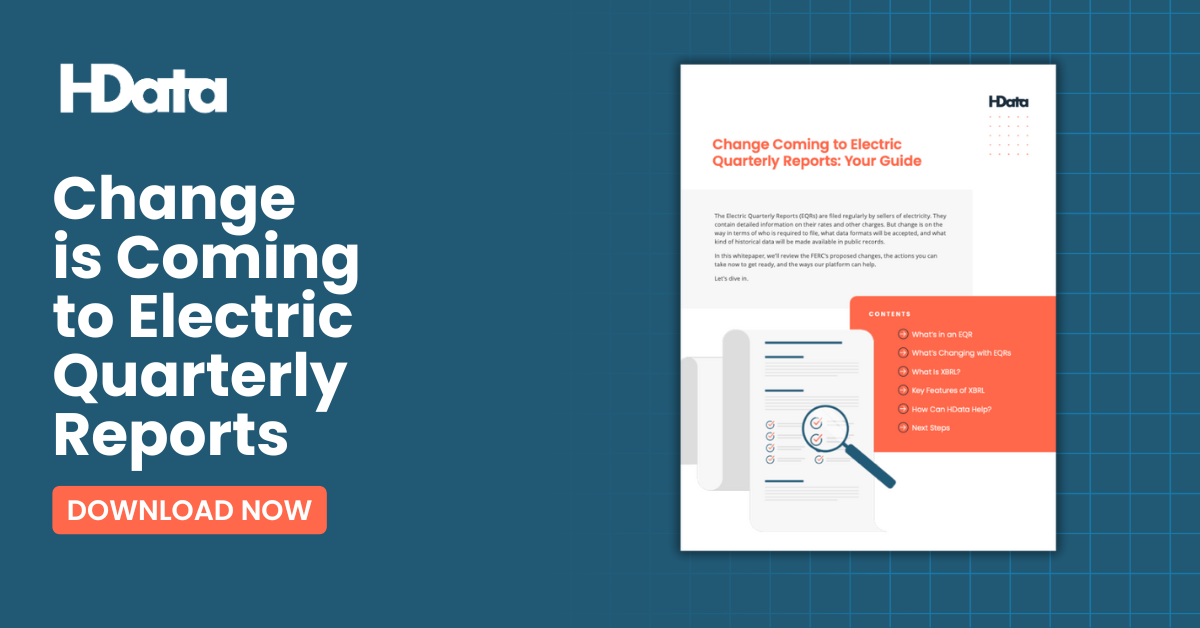The Federal Energy Regulatory Commission (FERC) has decided to modernize the way that energy companies report their financial and operations information. In 2021, companies are due to submit their first forms tagged in an XBRL structured data format. This is great news for both the energy regulatory sector and the private sector.
Modernization at the FERC
In 2015, the FERC initiated its eForms project to replace its longtime practice of requiring energy companies use Microsoft Visual FoxPro. The latest version of Visual FoxPro was released in 2007 and Microsoft stopped supporting it completely in 2015. An additional problem with Visual FoxPro is that the process results in a PDF report. PDF makes it nearly impossible to pull the reported metrics apart or to electronically identify specific numbers and perform calculations or analytics.
In June 2019, the FERC issued a final rule requiring energy companies to report their finances and operations in a structured data format. Next year energy companies will stop using Visual FoxPro and begin reporting in the FERC’s new electronic filing format. This modernization will mean better reporting for energy companies and increased transparency for regulators, investors, and the public.
In July 2020, the FERC published the data format so that energy companies could start getting ready. The new format will apply to quarterly and annual reports of energy companies and specifically impact the following forms: 1, 1-F, 2, 2-A, 3-Q, 6, 6-Q, 60, and 714. The FERC set the following deadlines for the first quarterly and annual reports to be submitted in the new filing format.
-
Starting in December* 2021, third quarter reports are due in the new XBRL format.
-
*Update: on March 30, 2021, the FERC extended deadlines for third quarter reports. Click here to learn more.
-
-
Starting in April 2022, annual year-end reports are due in the new XBRL format.
The transition to structured data
The good news for energy companies is that preparing and finalizing their reports is getting easier, not harder. Because the FERC has adopted a structured data format, it will now be possible to automatically convert spreadsheets the first time and then manage the reports interactively every time in the future.
The first report will have to get set up in XBRL. Energy companies should expect to upload a spreadsheet and use software to convert it from Excel into the FERC’s electronic filing format the first time. The software will help them make sure it’s correct — it will be able to ensure that all the numbers are properly entered and that all of the FERC’s accounting rules are followed.
In the future, for each of their forms, energy companies will be able to either upload a spreadsheet or modify the information that was reported the previous time. Energy companies will no longer have to translate numbers into Visual FoxPro every quarter. Instead they will be able to easily modify the previous periods report or upload a spreadsheet and have it converted into the FERC’s format.
The open public data released by the FERC will allow companies to do even more. Imagine being able to automatically calculate and visualize your rate base and capital ratios as derived from your own financial forms. Imagine being able to browse and analyze your own data and the information of their peers and competitors have previously reported, all with intuitive search-engine functionality.
Adding easier compliance to instant intelligence creates a smarter future for energy companies, for the agencies that regulate them, and the investors that follow them.


